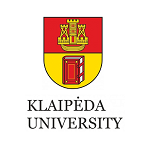EDUCATIONAL INNOVATIONS IN SCIENCE MUSEUMS FROM TOURISM PERSPECTIVE
Egle Gerulaitiene
Last modified: 24.03.2022
Abstract
Mission, civic and social responsibilities of the museums have been constantly changing and transforming to address and response to social, discursive and economic imperatives. Operating in an increasingly competitive tourism environment, museums have moved away from their traditional roles and functions of collecting, conservating and researching artefacts and exhibiting tangible and intangible heritage. They became audience-focused attractions that engage new audiences such as school children, families and professionals. ‘Museums’ now included collections of educational expertise, embodied in new modes of display and learning. Analysing transformation of science museums and centres, a recent paradigm shift has been observed reflecting profound historical changes in goals and roles of these informal science learning environments (Pedretti, 2020). Many authors (Easson & Leask, 2020; Barron & Leask, 2017; Falk and Dierking 2016) discussed the museum strategies of visitors attractions, engagement, creation of alternative products, experiences and methods. Demographic and generational change has led to recognition by museum professionals of an obligation to meet the needs, expectations and demands of its visitors, resulting in the development of strategies to not only re-engage core museum visitors, but to attract and engage new audiences (Black, 2012). National musuem of Scotland is analysed as case for presenting innovations in Science museums. The paper will discuss 6 galleries and collection of exhibitions with enourmous amount of exhibit units. Our focus was on the Science and technology galeries, which presents such topics as communication, transport, industry, engineering, energy, medicine.
Keywords
innovations in museums, education in museums, tourism.
References
Boyd, W. (1999). Museums as Centers of Controversy. Daedalus, 128(3), 185-228.
Easson, H. & Leask, A. (2020) After-hours events at the National Museum of Scotland: a product for attracting, engaging and retaining new museum audiences?, Current Issues in Tourism, 23:11, 1343-1356, DOI: 10.1080/13683500.2019.1625875
Ferguson, L. (2020) Strategy and Tactic: A Post-Modern Response to the Modernist Museum, Cameron, F., Kelly, L. (Eds.), Hot Topics, Public Culture. Cambridge
Gray, C. (2015). The Politics of Museums. New York: Palgrave and Macmillan.
Hein, H. (2007). Redressing the Museum in Feminist Theory. Museum Management and Curatorship, 22: 1, 29-42.
MACDONALD, S., & SILVERSTONE, R. (1992) Science on display: The representation of scientific controversy in museum exhibitions. Public Understanding of Science, 1, 69-87.
Pedretti, E., & Navas Iannini, A. M. (2020). Towards Fourth-Generation Science Museums: Changing Goals, Changing Roles. Can. J. Sci. Math. Techn. Educ. https://doi.org/10.1007/s42330-020-00128-0








